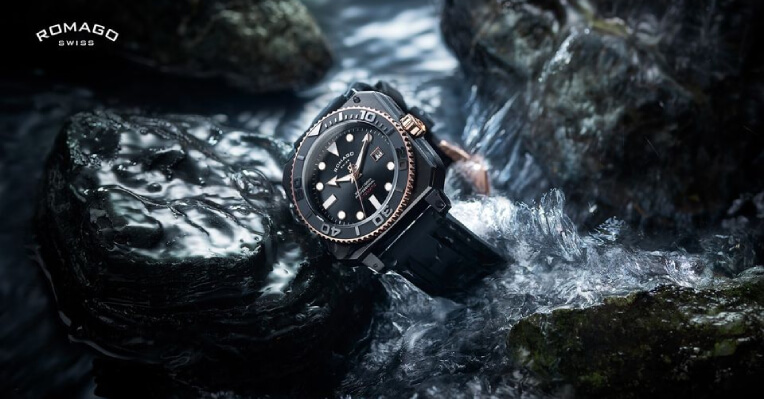If you are in the market for a waterproof watch, we’re sorry to break it to you, but it doesn’t yet exist. Any watch that you’ve ever seen labelled as ‘waterproof’ probably meant a watchmaker or marketer has lied to you.
The right label to use is ‘water resistant’. What it means for a watch to be water resistant is that it can withstand contact and pressure from water, depending on the level of water resistance it has. Even for water-resistant watches, there is always still a limit at which the pressure will be too much for the watch to handle. That is why no watch is ultimately ‘waterproof’.
How do manufacturers make water-resistant watches? And what can you do – or not – with your water-resistant watch? Get these questions and more answered right here below!
What makes a watch water resistant?
Water-resistant watches usually use an O-ring, or gasket, that acts as a seal inside your watch. The rubber or silicon material sits inside the case and protects the inner parts of the watch from moisture.
Additionally, dive watches which are made to be highly water resistant will be made with minimal openings, highly sturdy casing materials, and multiple heavy-duty gaskets at various parts of the watch.
How water resistant is my watch?
Not all water-resistant watches are the same! That is why it is important to understand what the water resistance level of your watch is, before you go around showering or swimming with your precious luxury swiss watch.
At the very basic level, a watch stamped with the words ‘water resistant’ can just mean it is able to tolerate splashes of water from regular handwashing or the occasional bout of rain. You shouldn’t assume that just because it says ‘water resistant’, that it is waterproof!
Water resistance is measured by ATM (atmosphere) or bar, a unit of pressure (1 ATM = 1 bar). Sometimes, it is labelled in meters, where 1 ATM = 10 meter. These labels denote the amount of water pressure the watch can withstand, not the depth to which it will survive. As a very rough guide, here’s what some of those water resistance measurements mean:
• 3 ATM / 3 bars / 30 meters: Your watch is splash-proof, but don’t go swimming with it.
• 5 ATM / 5 bars / 50 meters: You can go swimming with your watch, but don’t go too deep with it.
• 10 ATM / 10 bars / 100 meters: Your watch should survive going with you snorkelling, but not diving.
• 20-30 ATM / 20-30 bars / 200-300 meters: You can probably dive with these just fine, but don’t go too crazy with it.
• ISO 6425: These are certified diver’s watches which are guaranteed to handle depths of up to 100 meters.
Is there maintenance needed for water-resistant watches?
Believe it or not, water resistance doesn’t last forever! Regular testing and maintenance is required if you want to ensure your watch remains water resistant enough to hold up throughout your activities.
Remember, water resistance is conferred by the rubber or silicon gasket. This is prone to losing its elasticity and loosening the tightness of the seal over time. This is also the reason why you shouldn’t count on your vintage watch to be water resistant – unless it has been serviced only recently.
Testing the water resistance of your watch should be done regularly if you frequently expose it to moisture. During maintenance, the gaskets may be replaced and lubricated to restore the water-resistant seal.
Conclusion
Having a water-resistant watch is super handy, even just for day-to-day exposures to humidity and moisture. For that peace of mind, it is definitely a worthy investment to choose a watch with at least a basic level of water resistance!
Whether you are looking for a basic water-resistant fashion watch, or even a tough and sturdy diver’s watch like those from Ball Watch or Romago Swiss, you’ll have plenty of choices here at Leong Poh Kee. Don’t miss out on these wonderful watch collections right here!

